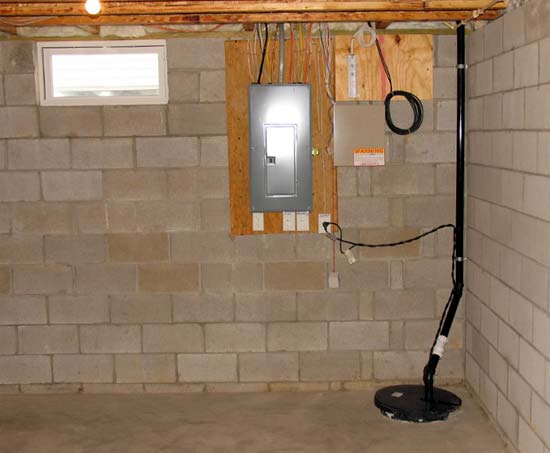Thinking about finishing your basement? You definitely don’t want any water to damage all of your hard work. Make sure you have a sump pump installed to help! It goes in the basement of the floor and collects groundwater before it causes damage to the concrete floor. During a rainy period, groundwater rises in the foundation of the home and increases the possibility of cracks and flooding.

By attaching the sump pump to the basement, when groundwater levels rise to a certain point the pump will engage and redirect it away from the home’s foundation. Almost all new homes are built with these from the start. But you can still install a sump pump in an older home.
Why is it used in the home?
The sump pump is the tool used to prevent flooding that might come through the basement floor. Many homes have basements. They’re great for storage! But it’s also a place that can get excess moisture. That’s why you need a sump pump.
The sump pump works by attaching a pipe that pulls the water out of the pit with a mechanical motor or pump. A check valve pipe is used in the pump to prevent the water from returning to the pit. It’s triggered automatically when the water in the pit reaches a specific point. Then the water is moved up the pipe and out of harm’s way.
Sump Pump Attributes
Model Types
A sump pump can be manual or automatic depending on the model. But trust me, you want an automatic model. There are different kinds of switches: diaphragm, electronic, and float switch.
The diaphragm switches to initiate or stop the pumping by the use of water pressure. There are differences in the switches as adjustable and non-adjustable.
Because the sump pump uses electricity, the switch itself might be an electric model. But most of the time it’s a float switch. As the water level moves higher it pushes the float higher as well. This, in turn, trips the switch.
Horsepower of the Sump Pump
The pump itself is a motor. Motors are measured in units of horsepower. If you’d like to check out these sump pump guides that show different horsepower options. The minimum horsepower you’ll likely want for the pump is 1/3 Hp.
The Voltage of the Sump Pump
If you’re looking to buy a sump pump for your home, most sump pump motors will run on a 110-volt circuit. Possibly 115 in certain parts of the world. Larger motors, typically for commercial use, will run on the higher 220 volts.
Cord Length of the Sump Pump
You might not think this would matter much but it can! The location of the sump pump in relation to an electrical outlet makes this important. But it’s fairly straightforward. You simply determine how long you need the cord to be for your situation. Most of the time the sump pump electrical cords can come in 5-, 10-, 15-, 20-, and 25-foot lengths. Do not use an extension cord! Remember, safety first.


